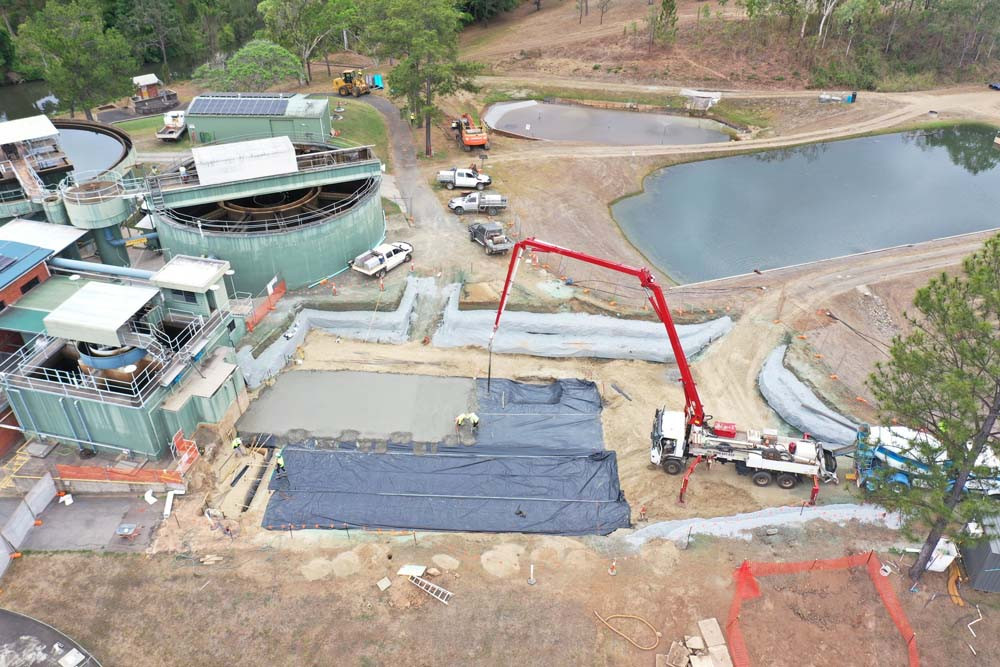Community & Business
21 November, 2023
No restrictions but reduce water use, says council
WITH Mareeba residents using nearly 3000 litres of water a day, Mareeba Shire Council is urging locals to be mindful of their use over the next few weeks as it progresses major upgrades to the town’s water treatment plant.

While council is stressing it is not going to introduce water restrictions, three major projects are underway, with one requiring the main reservoir to be emptied for a few days while it is connected to the new filtration system.
During that period, water will be sourced from a smaller holding facility but officers believe it will be adequate if everything goes to plan.
The three projects involve upgrades to the filtration system, the raw water pump, and the booster pump station and, when completed, will increase the capacity of the plant.
The upgrade to the booster pump station will not only increase the fire-fighting capacity in the Mareeba township area but also tackle ongoing water pressure issues on the western side of the town and ensure council meets the minimum required water pressure standards to its residents.
Infrastructure Services director Glenda Kirk said during the upgrade works, all of which will be finished by 30 June 2024, some components of the water treatment plant would be taken offline.
“It means that we are doing reconfigurations of our existing plant so some of the components will remain online but at various stages of the project we will need to take components offline which means we won’t be supplying the full complement of water,” she said.
“We have done some careful monitoring and we are seeing some pretty high water consumption as you would expect at this time of the year.
“We have done some risk planning and trialling and we don’t believe that we will need to implement water restrictions ahead of that (works at the end of this month).
“However, one of our contingency measures within the risk management plan is that if we encounter issues throughout that project we may need to implement water restrictions quite suddenly because we have to connect to our main water reservoir and to do that we have to drain the reservoir and operate on a smaller reservoir.
“We’re confident that if nothing goes wrong, the community will not even know.
“If we have any major delays or issues with that connection, we will certainly let the community know. At this stage we are just asking people to be mindful of their water use.”
Water mains continue to be a problem for the council, with 52 breaks to date this year which is more than previous years despite council’s water main replacement program.
Council is about halfway through its 10-year water main replacement strategy which seeks to replace the most ageing pipes and is part of 30-year plan for all mains to be eventually replaced.
Ms Kirk said the importance of the program could not be over-estimated.
“While it’s higher (number of breaks), we started a lot more breaks in January which has carried through the year,” she said.
“It demonstrates that the water main program is hugely critical. I would hate to think about what that graph might look like if we weren’t replacing the 2-3km a year that we have been.
“While we have that 10-year program that identified areas that we needed to do year by year, we’re also adapting that program as we see areas where we have had to reactive.
“Mason Street, for example, was not in our register as being high risk, but we did identify some breaks late last year so that’s now been included in the program.”
She said many other areas of the State were experiencing the same issues because water mains were probably installed around the same time and hitting “end of life”.
“Asbestos cement fails over time and that can set of a chain reaction when you do have those because the whole main is vulnerable,” she explained.
“When it’s dry they break, when it’s wet they break, they are just very temperamental because at the moment what’s supporting those old asbestos water mains is the surrounding ground so when that shrinks or swells, that’s when we see those breaks.
“I think we will still see increases in breaks for the rest of the year.”
Mayor Angela Toppin said council had anticipated the breakages when council developed its 10-year replacement strategy.
“We are more than halfway through it but that doesn’t mean the other half isn’t as bad or even worse,” she said.
Ms Kirk said the10-year strategy was part of a 30-year replacement program.
“So, we have decades of this ahead of us,” she added.


